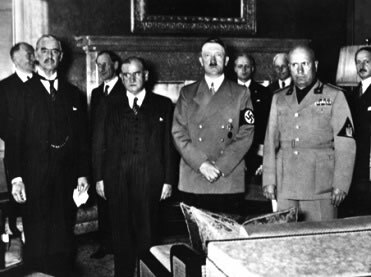After observing the importance of the Russian victory over the advance of Nazi troops, let us now look at other places where the confrontation continued. In the year 1942, we can observe the defeat of the Axis countries on other battlefronts. Japan forced the United States into conflict with the outbreak of the surprise attack on the US base at Pearl Harbor in 1941. The following year, US and Japanese troops clashed at the Battle of Midway.
In this confrontation, the victory of the USA took an important step towards halting the advance of Japanese imperialism in various regions of the Pacific Ocean. In the year 1943, General MacArthur led new offensives against Japanese forces. In the Central Pacific region, General Chester Nimitz's troops formed another front that, in October 1944, met General MacArthur's troops. By early 1945, US troops had managed to break through all areas of Japanese influence in Asia.
In the Atlantic Ocean, Allied troops managed to make their first advances by winning against sophisticated German submarines. In North Africa, a powerful German detachment called the Afrika Korps managed to pressure British troops into northeast Africa. That was when, at the end of 1942, the British action led by General Montgomery imposed a strong defeat on the Germans in the tank battle of Al Alamein.
In 1943, the Allied military collision moved towards the Italian Peninsula. That year, a set of US military forces landed in Italy. Undertaking a strong offensive in southern Italy, the fascist top commanders preferred to remove Mussolini from power and hand him over to General Badoglio, responsible for the Italian surrender.
Trying to preserve his leadership, Mussolini fled to northern Italy, where he proclaimed the so-called Republic of Saló. In the month of June 1944, Allied forces took over the city of Rome. The following year, Italian anti-fascist forces captured Benito Mussolini, who was sentenced to execution. Given the real possibility of winning the combat, as early as 1943, the allies held the Tehran Conference.
At that meeting, Russian President Joseph Stalin, US President Roosevelt, and British Prime Minister Winston Churchill outlined a plan to end German power. According to the established points, the Allies planned the process of occupation of Western Europe. On June 6, 1944, known as “D-Day”, Commander Dwight D. Eisenhower captained the landing of 36 divisions, 6,400 ships and thousands of planes in the French region of Normandy.
Undertaking an almost unshakable offensive, the troops left the German armies completely shaken. While these troops carried out the domination of Western Europe, Russian troops were recovering the territories of Eastern Europe. In the year 1945, the two battle fronts converged towards German territory. The city of Berlin was taken by the Soviets on May 1st. The following week, Nazi troops surrendered.
Do not stop now... There's more after the advertising ;)
20th century - wars - Brazil School
Would you like to reference this text in a school or academic work? Look:
SOUSA, Rainer Gonçalves. "The Allied Victory"; Brazil School. Available in: https://brasilescola.uol.com.br/guerras/a-vitoria-aliados.htm. Accessed on June 27, 2021.

